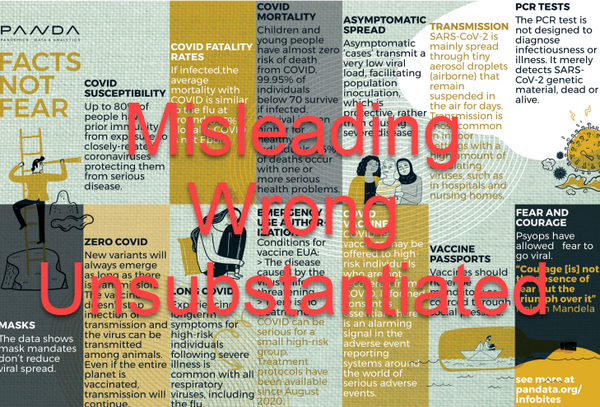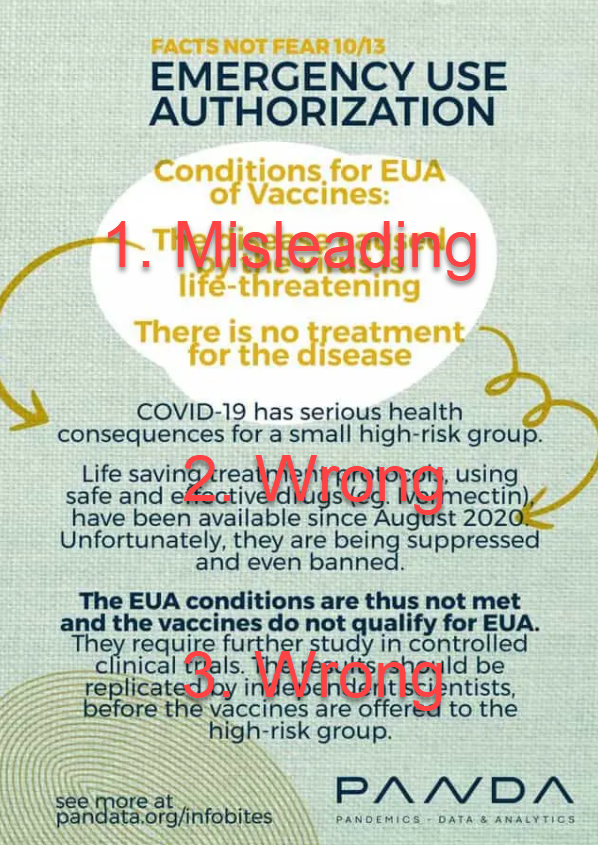Falsehoods not Facts: COVID-19 Mortality
Recently Pandemic Data Analysis (PANDA) has started spreading "infobites" under the heading "Facts Not Fear". Here I address these and show how they are misrepresenting facts. Number 2/13 addresses mortality.

Claim 1
PANDA claims that:
COVID-19 is dangerous for the very old, yet, the median age of death with COVID-19 is similar to that of natural mortality in most countries.
The point of the statement is unclear. If the median age of death is similar between COVID-19 and mortality due to other causes what it means is that it affects mortality roughly proportionally across the age range. I.e. it affects mortality consistently across the age range and thus does not change the age distribution of deaths.
Claim 2
PANDA then claims:
Children and young people have almost zero risk of death from COVID. 99.95% of individuals below 70 survive if infected.
The 99.95% of individuals below 70 survive (or 0.05% die) is kind of difficult to fathom. They source it from a paper by Ioannidis (dated September 2020). In this paper he states:
In people younger than 70 years, infection fatality rates ranged from 0.00% to 0.31% with crude and corrected medians of 0.05%.
Several commentators have been pointing out problems with Ioannidis work on COVID-19. This review provides a good overview of his work and the many problems encountered with it.
However, PANDA's own linked source in this paper points out that median age of death in South Africa is 62. That means half of all deaths are below 62. South Africa also has an excess death rate 0.44% of the population. The researchers behind that number believe the vast majority of those deaths to be due to COVID-19. So a bear minimum average COVID-19 fatality rate should be roughly 0.40%. South Africa has a pretty young population 96% of our population is under 70. There is no way mathematically for the median age of death to be 62 and the probability of survival under 70 to be 99.95%. The median age of death ties up to the data, so clearly the 99.95% is wrong.
If we use studies like Levin et al. (2020) and South Africa's age distribution the fatality rate is probably 0.13% under 70, but these estimates are probably too low still. A more recent preprint by Levin et al. (2021) puts that number even 1.3x to 2.5x higher.
Claim 3
PANDA then claims that
Survival is even higher for healthy individuals. 95% of deaths occur with one or more serious health problems.
They cite this article that points out that 94.9% of people that were hospitalised had at least one co-morbidity. These were classified by codes found in the data (and not necessarily by severity). The paper goes on to state that:
The percentage of the US adult population known to have 2 or more underlying medical conditions ranges from approximately 38% to 64% by state
So it's hardly a small sub-sample of the population. How do you protect such a large portion of the population?
Claims 4
PANDA goes on to state that:
Lockdowns failed to protect the vulnerable and caused immense collateral damage, particularly to the young and the poor. Resources should be focused on protecting ONLY the high-risk group (mostly people above 50, with other health problems). The rest can live normally.
Now they do not give any references for any of that apart from pointers to generic information on their own website and another website similar to this.
I do think there has been impact on the economy and brought about by COVID-19 and the measures to control it, but, the authors don't show that it cost more lives than otherwise would have been lost to the disease. It is also not clear how (or why) they want to focus resources on people above 50 with other health problems. Many countries including South Africa have multigenerational households. How are we supposed to protect those individuals while the other "live normally". It's simply impossible.



